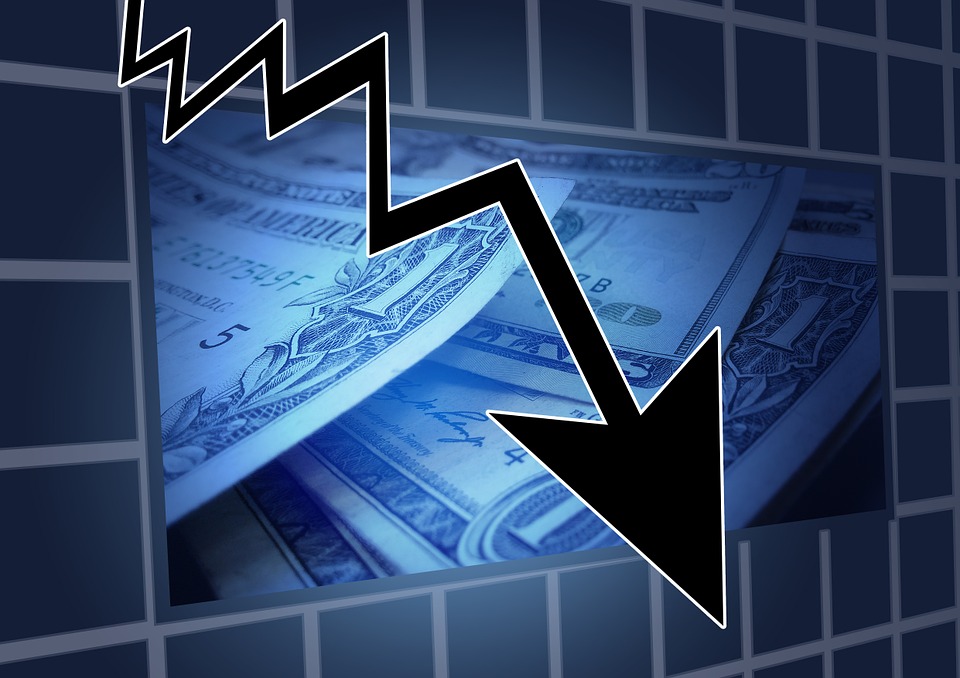MUFG: Depression-like economic data on the way – how will markets take it?
MUFG: Depression-like economic data on the way – how will markets take it?

G10 FX volatility continues to subside and the MUFG G10 FX Volatility Index has dropped back into single-digits and is just below the long-term average – undoubtedly helped by the continuous efforts of the Federal Reserve to flood the financial markets with US dollars. But there are many tests to these calmer conditions on the horizon and it would be premature to conclude at this stage that we have passed the worst. Equity markets certainly look priced for the COVID-19 shock unfolding in a favourable way from here. How COVID-19 trends determine lockdowns and how they are implemented will be important for the markets. As will the incoming economic data.
On that front, yesterday we got another sense of what this data is going to look like. Firstly, the IMF released its first stab at estimating the COVID-19 impact on the global economy. The IMF is forecasting -3.0% in global GDP this year – way way worse than the -0.1% recorded during the GFC in 2009. If realised it would be the worst print since the Great Depression. Secondly, the Office of Budget Responsibility here in the UK released its assessment of the COVID-19 impact and now assumes a 35% plunge in real GDP in Q2, a 2mn jump in unemployment resulting in a 10% unemployment rate, and an increase in public sector net borrowing of GBP 218bn in 2020-21 to reach GBP 273bn, or 14% of GDP. These estimates are based on a 3-month lockdown, followed by a 3-month gradual reversal. That 3-month complete lockdown could end up being too pessimistic but nonetheless, the OBR still assumes a 25% Q/Q gain in Q3 and a 20% gain in Q4. That trajectory still leaves calendar year GDP at -13% in 2020.
So Great Depression-like economic data is clearly ahead of us but we can’t take this information in isolation. Could the financial markets absorb the upcoming flow of horrible data without going into turmoil? We believe yes, for sure, but that is dependent on lockdowns unfolding in a way that indicates a strong rebound starting in Q3. We look at lockdowns below – but testing capacity and the recovery rates will be important in shaping markets’ expectations on lockdown reversal timings and length of time – and those variables will be as important as incoming economic data.
The dollar continues to weaken but equity markets remain well priced for lockdowns reversing without too many hiccups. But the re-escalation of new cases in China that prompted tourist attractions in Shanghai (Oriental Pearl Harbour) to be closed is a warning sign that hiccups are very likely along the way. Clearly our view over the short-term is that the balance of risks for the equity markets has shifted to the downside which suggests further notable US dollar selling over the short-term is unlikely. EUR/USD levels above 1.1000 may not last too long over the short-term.
USD: Testing and recovery rates will be key
Yesterday, we released our updated COVID-19 slide pack focusing more on the timelines and requirements for governments actively reversing lockdowns (click here) along with updates on COVID data trends and policy responses. One key message for readers is that while lockdowns are starting to reverse this week in certain countries, others remain some distance off and the process is likely to be slow with bumps along the way. There are now 88 countries and 47 US states in lockdowns and the average period of lockdowns starting to the next review date (or end) is 45 days. The average duration of lockdowns that have ended (mainly in China) is 55 days (Wuhan was 76 days) and hence plans in place for current lockdowns are shorter than the current average, although these could be extended at the next review dates.
But these potentially shorter lockdowns than what happened in China will only be credible if key countries can upscale testing capacity quickly. Testing in the UK has actually slowed a touch, 14,982 on 13th April, down from over 16,000 last week. By population, Italy remains in a strong position at 17.7 per thousand with Germany at 16.0. The UK however, is at just 4.3 tests per thousand.
Recoveries will be another important determinant of government’s policies on reversing lockdowns. A larger number of recoveries will help protect capacity in national health care systems and in countries where capacity is improving because recoveries outpace new cases will have greater reason to allow lockdowns to end.
There are three countries in Europe currently in this position. Austria, for 10 consecutive days now, has seen recoveries outpace new cases of COVID-19 while both Switzerland (9 days out of 12) and Germany (7 days out of 8) have had a large number of days recently when this has happened.
On this basis, the UK and the US remains some distance away from being in this position. Hence why the UK government will tomorrow extend its lockdown at least until the end of the first May bank holiday. The UK legislation obliges the government to review lockdowns every 3 weeks, which would imply an extension until 7th May. Many US states are also set to ignore President Trump’s calls for reopening the economy.
So the good news remains that lockdowns are working and the trends in COVID data continue to show that. However, more needs to be done on testing, in particular in the US and the UK in order to reverse lockdowns during May.
EUR: Euro-zone governments underwhelm
A further reason for not being convinced of the short-term upside potential for EUR/USD is the outcome from the EuroGroup finance ministers meeting last Thursday. Remember, the ECB reportedly was calling for fiscal support in the region of EUR 1.0-1.5trn but in the end the package agreed was EUR 540bn. Much the detail agreed was already known – the EUR 200bn financing for SMEs through the EIB and the European Commission job protection plan worth EUR 100bn. The third element was also widely reported but was less clear on reaching consensus – that was the usage of ESM credit lines up to 2% of GDP (EUR 240bn).
The EuroGroup statement did hint at more to come and that hint has perhaps curtailed market disappointment. A Recovery Fund, was mentioned but no size or how it would be financed was mentioned.
I guess we shouldn’t be surprised. Agreeing a larger fund through shared financing would be far more contentious but that’s where the euro-zone needs to go in order to put in place the fiscal support that is required. A failure to agree a larger plan would also have longer-term consequences and would be viewed as Europe failing to rally around Italy and Spain, the two worst hit countries in the euro-zone. We assume a plan will ultimately be agreed but doubts over the scale of policy support in the eurozone will persist and is a risk factor for the euro if risk-off trading conditions were to re-emerge due to lockdown reversal delays that shift current expectations on the COVID-19 hit to the global economy.









